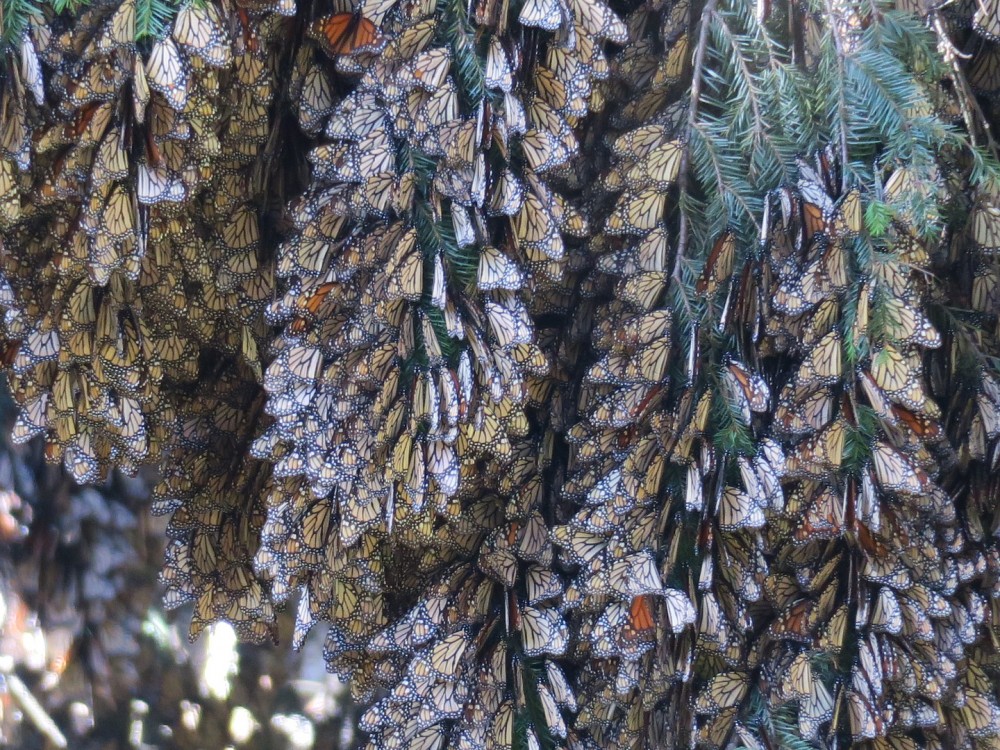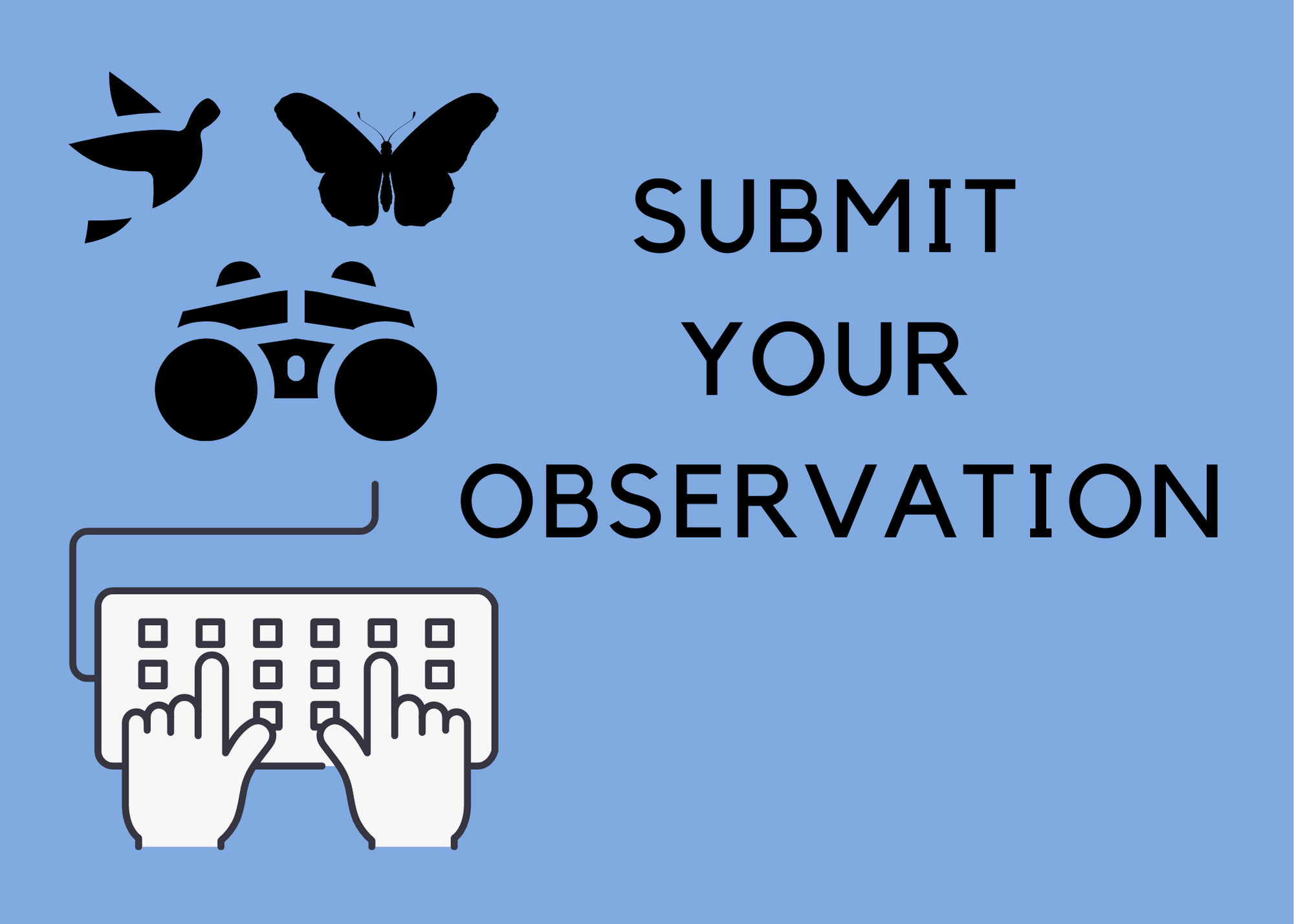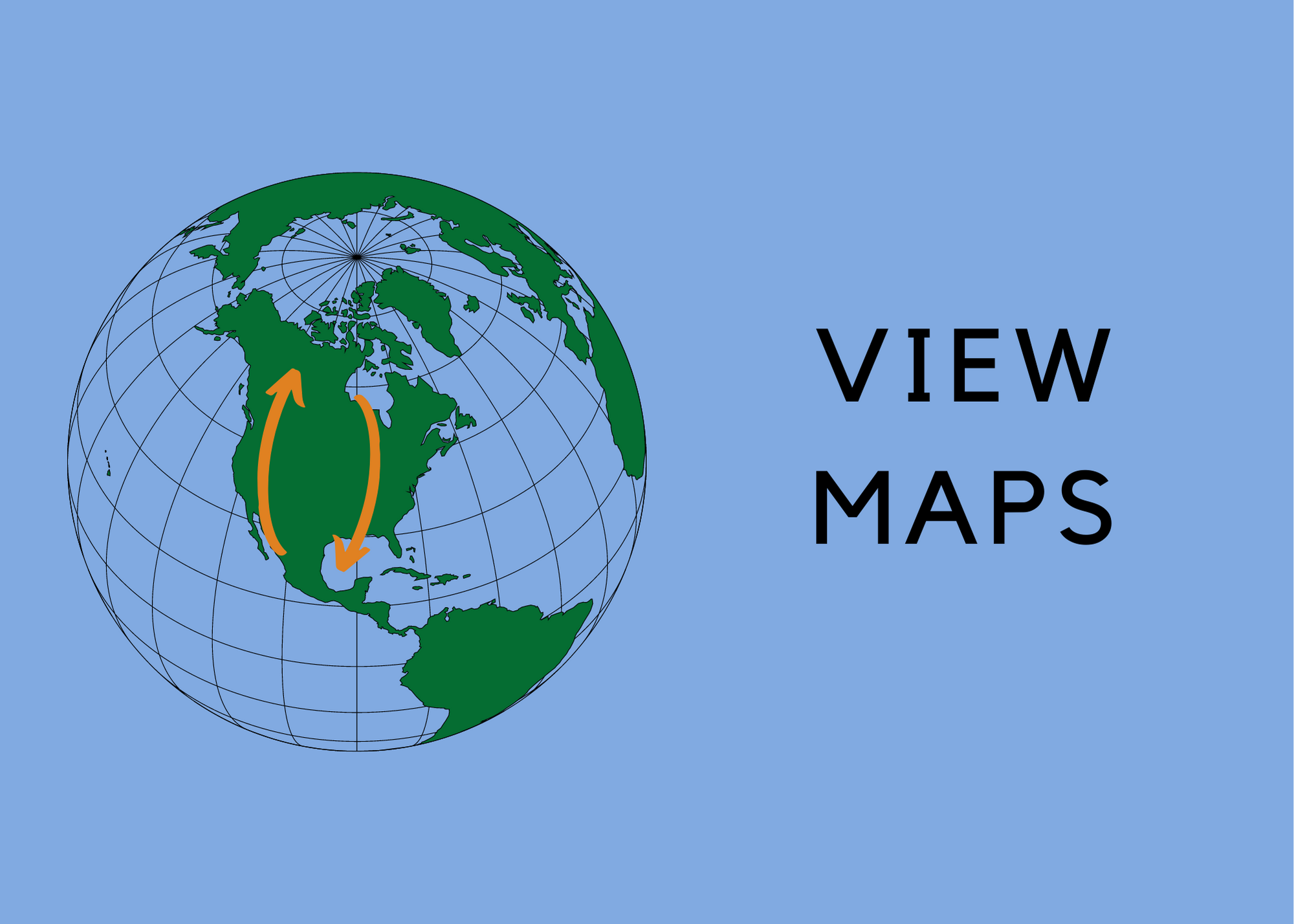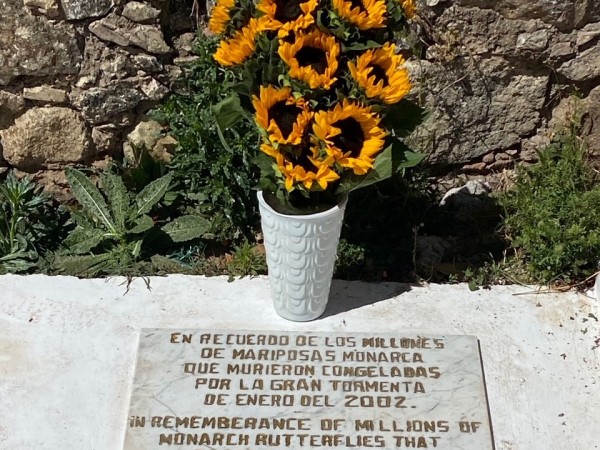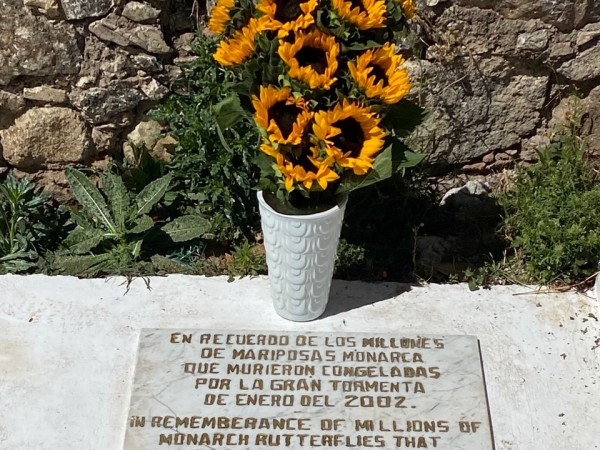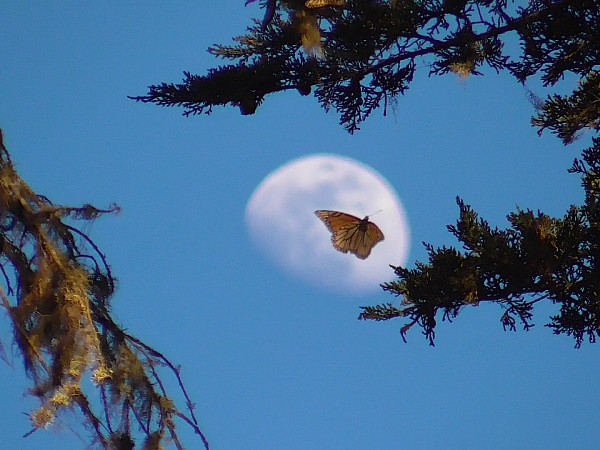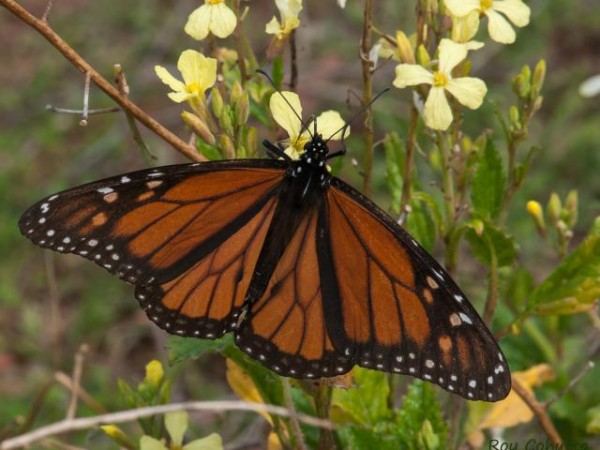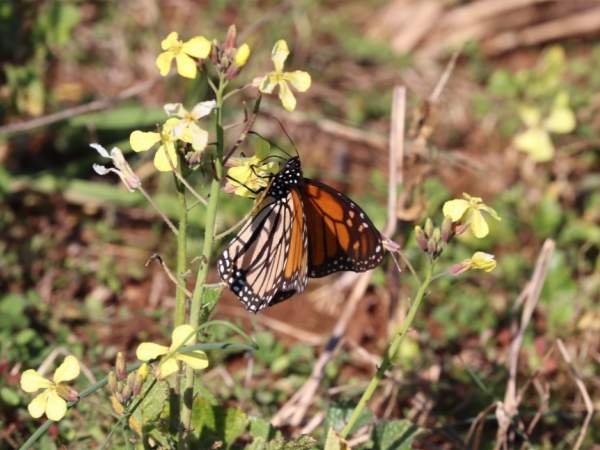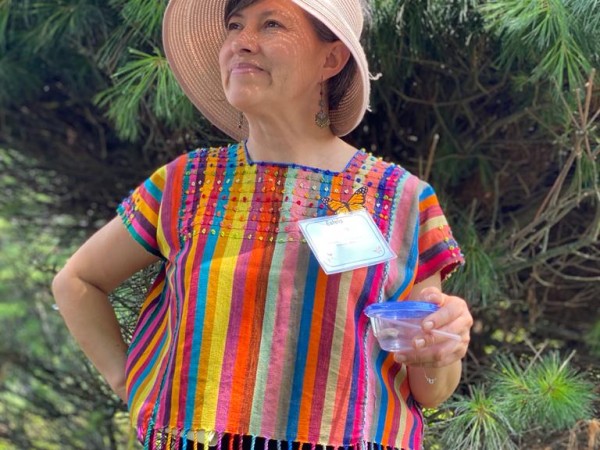Brilliant Displays
Spring is just under five weeks away. In Mexico, Estela Romero reflects on the 20th anniversary of a large storm that tested the resiliency of monarchs. In California, Gail Morris highlights monarch mating behavior and warmer temperatures. And as always, report your monarch observations to Journey North.
Letter from Estela Romero: Flowers of Remembrance
During the 2001–2002 overwintering season, a heavy snowstorm killed millions of monarchs. On the 20th anniversary of this event, Estela Romero reflects on the resiliency of monarchs and how local communities continue to honor the monarchs that perished. Estela writes, "In January 2002, a heavy snow storm followed by an intense frost created the most deadly event for monarchs at the butterfly sanctuaries in Central Mexico . . . It was Dr. Lincoln P. Brower and his students who witnessed this sad event. They collected a sample of the millions of monarchs that froze during this storm event and placed these monarchs in a specially hand-decorated clay pot made by a local artist and buried this pot in the town’s cemetery."
Read more of Estela Romero's Letter: Flowers of Remembrance»
Leer más de la carta de Estela Romero: Flores de Remembranza»
Letter from Gail Morris: Western Monarch Winter 2021–22 Report #7
In California, Gail Morris shares news of an increase in mating behavior and monarchs venturing out to new locations as temperatures rise. Gail writes, "Mating soared with warm weather across California as monarchs became more active at the overwintering groves this week. San Diego set a new high temperature record for February, reaching 90° F for the first time ever. Monarchs now are expanding their range in many locations. Still, a number of monarchs are remaining near the groves. Everyone is hoping early native milkweed is emerging across the landscape as monarchs now begin to search for their only host plant to lay their eggs."
Read more of Gail Morris' Letter: Western Monarch Winter 2021–22 Report #7»
Call to Action – Report Monarchs in the Southeastern U.S.
As we enter the final month of this monitoring project, you can help contribute to research efforts on monarch overwintering behavior and how monarchs respond to extreme weather events by submitting your observations to Journey North.
Roy in Albany, GA: "The primary purpose of this trip was to attempt to determine where the Monarchs and the Queens spent the cold nights. I arrived early while it was still cool (50F) and overcast. I walked and scanned the field and surrounding trees/swamps/brush with binoculars for approximately 2 hours (0930-1130). I did not see a butterfly until approximately 1130 when the temperature reached approximately 60F. The Monarchs and Queens began flying up from previously unseen locations under and around the plants in the field . The butterflies were scattered randomly around the field. They were not clustered together." (02/12/2022)
Learn more about the significance of Roy's report from our project partners at the Georgia DNR. Thank you to all who have participated and please keep reporting. Learn more about What to Report and view our Instructional Flyer.

